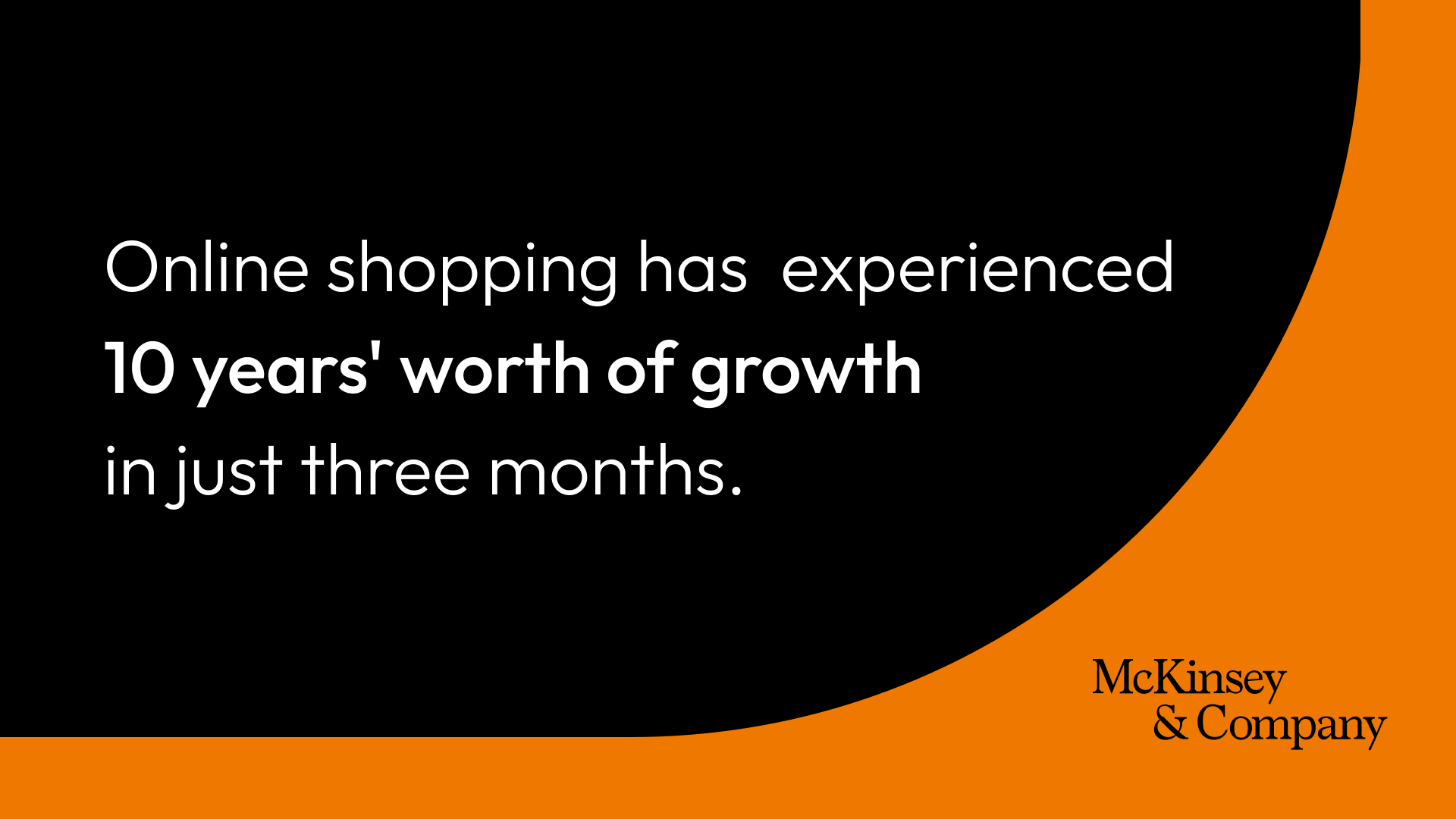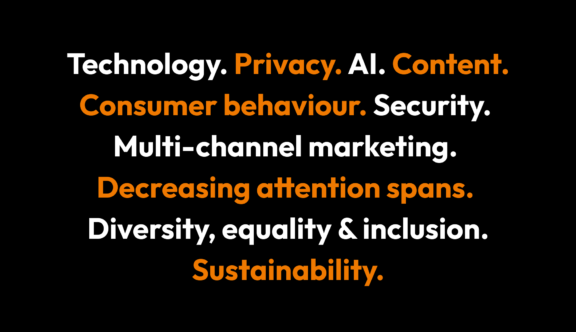If you’ve worked within any sort of proximity to the marketing industry, you’ll know that each year brings forth a new tapestry of challenges and opportunities for us to get our heads around.
As the Marketing Director of StrategiQ, a global strategy agency based in the UK, I understand the importance of staying ahead of the curve in order to deliver the best possible results for our clients. As we start preparing for the year ahead, I’ve taken some time to unpack the top 10 marketing challenges that 2024 has in store for us – as well as provide strategic solutions to not only navigate, but also overcome these challenges.
1. Adapting to rapid technological advancements
The challenge:
‘Evolve or die’ – they were talking about marketers trying to keep up with technology, right?!
In an era where technology continues to evolve at an unprecedented pace, staying ahead is not just an advantage; it’s a necessity. The challenge lies in integrating these advancements seamlessly into our marketing strategies and using them in a way that makes sense for each client.
The solution:
Embrace a culture of continuous learning, invest in training and development opportunities, and stay informed through trusted industry networks to navigate the dynamic technological landscape effectively.
2. Balancing privacy concerns in the digital age
The challenge:
If you’re not abiding by the relevant privacy laws, you’ll find yourself in a pickle – to say the very least.
Privacy is paramount in the digital age, where evolving regulations demand a delicate balance between innovation and ethical data practices. The consequences of getting this wrong can have a devastating impact on both business performance and reputation, and consumers certainly won’t forget about it in a hurry.
The solution:
Do the research.
Stay abreast of changing privacy laws, implement robust data protection measures, and prioritise transparency in communicating data practices to build trust with consumers. According to a recent survey by Pew Research, 79% of consumers consider transparency about how their data is being used as a crucial factor in trusting a company, so it’s absolutely essential to get this right.
3. Harmonising AI and automation in marketing
The challenge:
Use the robots, but don’t be robotic.
AI and automation offer unparalleled efficiency and have revolutionised a number of digital processes in the marketing world, but wherever we use technology, the challenge is to maintain the human touch in our marketing efforts.

The solution:
Integrate AI strategically, keeping the customer experience at the forefront. Combine automated processes with personalised interactions to create a harmonious marketing approach and let your customers know that there’s very much a human presence behind your digital identity. According to Gartner, by 2024, 25% of customer service and support operations will integrate virtual customer assistants or chatbot technology across engagement channels, so you’ll want to make sure you’re one of the ones doing it right.
In the realm of AI and Automation Integration, businesses like Gorgias are leading the way.
As a revolutionary helpdesk solution for e-commerce brands, Gorgias’ cutting-edge customer service platform utilises AI to streamline interactions from many channels and sources into a single customer service view, offering an efficient blend of automation and personalised communication. Doing this means businesses can seamlessly integrate AI into customer service, enhancing efficiency without compromising that all-important human touch that consumers still want to see.
4. Crafting standout content amidst the digital noise
The challenge:
Audiences want original, intriguing, authentic-feeling content – which everyone else on earth is trying to make, ALL the time.
The digital landscape is a cacophony of content, making it challenging to stand out. With the constant competition to jump on trends first and weigh in on every hot topic, it’s easy to become lost in the fight for likes, views and other such vanity metrics, as opposed to creating meaningful content that your target audience can actually connect with.
The solution:
Prioritise quality over quantity, every single time.
Conduct in-depth audience research and leverage creative storytelling to create content that resonates with your target audience and touches on the things they actually care about. A study by HubSpot, a leading CRM platform and StrategiQ partner, reveals that content with visuals receives 94% more views than content without visuals, meaning you’ll also want to think about how to make your content visually captivating in order to grab attention.
We pride ourselves on collaborating with trailblazing technology providers in the marketing industry, and our trusted partners over at DotDigital know a thing or two about creating content that stands out and holds its own within the tremendously oversaturated digital landscape.
With their comprehensive marketing automation solutions, DotDigital empowers businesses to create engaging content that resonates with their audience by giving marketers the best possible understanding of the people they want to speak to. By leveraging DotDigital’s expertise, your content strategy can rise above the noise and capture the attention of your target market, without wasting time or resources on pumping out pointless material.
5. Adapting to post-pandemic consumer behaviour
The challenge:
Most businesses wouldn’t have had a global pandemic in their ten-year plan.
The post-pandemic world has witnessed enormous shifts in consumer behaviour, many of which we’ve had to pivot marketing strategies around with very little warning. This has meant that, in order to stay ahead, businesses have had to be more agile than ever before, as well as carry out constant analysis of their audiences and the movements of the wider market.
The solution:
Regular analyses of consumer behaviour, staying attuned to emerging trends, and swift adjustments to marketing strategies are imperative. According to McKinsey, the pandemic has accelerated the shift to e-commerce at an exponential rate, with online shopping experiencing 10 years’ worth of growth in just three months. Marketers and CMOs need to be paying close attention to the post-pandemic rise of digital commerce and how they can create the smoothest possible digital journey for their customers moving forward.

6. Ensuring robust data security measures
The challenge:
Data breaches will cost you a pretty penny if you don’t have the correct measures in place.
Data is one of the most valuable assets in the modern world, so ensuring its security is non-negotiable for any business.
The solution:
Invest in trusted, state-of-the-art cybersecurity measures to secure the privacy, integrity and availability of your data. Conduct regular security audits and educate your teams on cybersecurity best practices in order to safeguard customer information and flag anything which could potentially cause issues. According to a report by IBM, the average cost of a data breach in 2023 is estimated to be $4.24 million, so it’s certainly not a mistake many businesses can afford to make.
7. Mastering multi-channel marketing
The challenge:
Not all channels are created equal, and not all channels will make sense for your business.
Effectively navigating diverse channels requires a comprehensive strategy which focuses on the platforms and touchpoints that work best for your business, while giving you the best chance of connecting with the people you’re trying to reach.
The solution:
Focus on developing a comprehensive multi-channel strategy, utilise analytics to understand channel effectiveness and consumer behaviour, and tailor content for each platform to maximise engagement. According to a study by Nielsen, consumers who engage with a brand on multiple channels spend 4% more on average compared to those who don’t, so you’ll want to make sure you always have the right content, in front of the right people, at the right time.
The key to a successful multi-channel marketing strategy is, without a doubt, integration.
For mastering multi-channel marketing, the all-in-one platform provided by HubSpot is a game-changer. HubSpot enables businesses to manage and optimise marketing across diverse channels and platforms seamlessly; combining content management, marketing, sales, customer service and operations tools in one place.
Multi-channel marketing goes hand-in-hand with a robust customer experience (CX) strategy, so if you want to get the most out of your multi-channel marketing efforts, it’s worth familiarising yourself with the basics of CX and why it’s so important. Download our whitepaper here for all you need to know about CX.
8. Capturing attention in the age of shorter attention spans
The challenge:
Digital opportunities are growing, and attention spans are shrinking.
In an era of ever-shortening attention spans, crafting messages that captivate is an art that must not be underestimated.
The solution:
Think about what would actually stop someone mid-scroll. A study by Microsoft Corp. found that the average attention span has dropped from 12 seconds to just eight seconds over the past two decades, so it’s essential to get to the point quickly and engage your audience within the first few seconds of being exposed to your content.
Craft concise and compelling messages, remembering that less is always more. Pair your messaging with eye-catching visuals and interactive content, where possible, and keep this connected to the key message. By adapting to the fast-paced digital landscape, we not only capture attention, but also sustain engagement – which counts for a lot more than a one-off successful post.
9. Meeting the demand for diversity and inclusion
The challenge:
An EDI (equity, diversity and inclusion) strategy requires structural change from the inside out, and many businesses don’t know where to start with it.
Diversity and inclusion are not just buzzwords or box-ticking exercises; they’re essential components of authentic marketing, and they’re crucial to the growth and success of any business.
The solution:
Diversity and inclusion starts from within, before rippling outwards into marketing efforts. This means fostering a diverse and inclusive workplace; enlisting the help of EDI specialists if extra support is needed in this area. When a workplace is made up of diverse perspectives and experiences, this enhances a business’ ability to connect with diverse communities and produce authentic, engaging campaigns that speak to wider audiences. On top of this, EDI practices have been shown to have a positive impact on product innovation, revenue, growth, staff retention and workplace culture, so if you want your business to perform (and sustain its performance), your team needs to reflect the richness of the world we operate in.
10. Integrating sustainable marketing strategies
The challenge:
In a world where more and more people want to go ‘green’, how can you prove that your sustainability efforts are genuine?
As environmental consciousness grows, genuine sustainability efforts are not just ethical; they are essential – and businesses guilty of ‘greenwashing’ will soon be sniffed out by dedicated consumers.
The solution:
Start with looking at how you can run your business in a more sustainable way. Embrace those practices and communicate with transparency around the eco-friendly initiatives you’re implementing. By actively engaging in authentic sustainability efforts, you’ll build trust with environmentally conscious consumers, fostering a commitment to credible action and a greener future. A Nielsen study found that 73% of consumers are willing to change their consumption habits to reduce their environmental impact, meaning your sustainability efforts could be the difference between a consumer purchasing with you or purchasing elsewhere.

Feeling ready for 2024?
In conclusion, navigating the marketing landscape in 2024 demands strategic thinking, adaptability, and a commitment to ethical and sustainable practices.
By addressing these challenges head-on and implementing thoughtful solutions, your business can not only overcome potential obstacles, but also thrive in the dynamic world of modern marketing.
If you’re ready to stop simply surviving and start thriving, and you could use a bit of guidance in conquering these challenges, partner with us to change the trajectory of your business and start enjoying the results you deserve in 2024. Get started by discussing your marketing challenges with our team of experts today.
